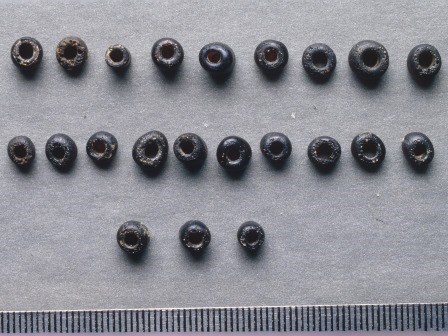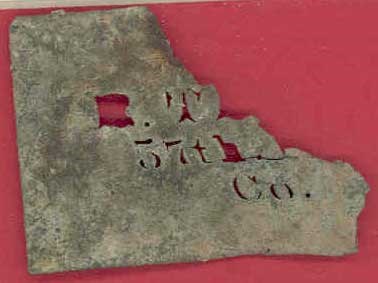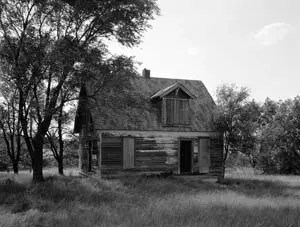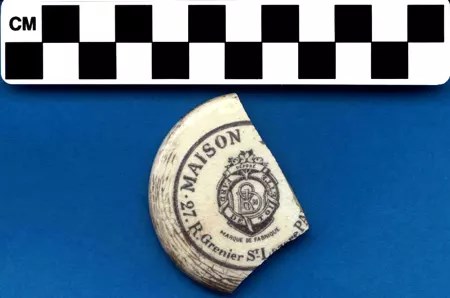Last updated: March 6, 2023
Article
Archeology This Month: Black History and Heritage

Learn more at Telling All Americans' Stories: African American Heritage and Civil Rights.
Find places to go on Visit African American Archeology and search the National Register or National Historic Landmarks database.

Slavery
Beginning in the first third of the 17th century, Africans were brought forcibly to the New World on slave ships directly from Africa or interstitial places in the Caribbean or Mexico. European colonists relied on enslaved people's knowledge and labor in order to succeed in agriculture and industry, or manage their households. For many enslaved Africans, archeology offers perspective into their lives that cannot be known any other way.
In 1619, slavers brought the first Africans to mainland English North America from Angola. Captain William Pierce purchased a woman named Angela, who was listed in 1625 in his household in New Towne on Jamestown Island. Archeologists found clues about her life through the place where she lived and the things surrounding her. Jamestown Rediscovery works in partnership with the NPS to investigate where Angela lived and worked.
In lower Manhattan, over 15,000 intact skeletal remains of enslaved and free Africans who died in colonial New York from the mid-1630s to 1795 were excavated from the African Burial Ground. Archeologists and forensic specialists learned about the mortuary practices of enslaved Africans in colonial New York. Each person was buried individually, most in wooden coffins, with their heads to the west. They were buried in shrouds and sometimes with items such as coins, shells, and beads. Over time, the Burial Ground became densely crowded with burials stacked four deep in some places.
A hundred years after Angela's arrival in Virginia, Major Edward Travis enslaved 44 people on his Jamestown Island plantation in 1768. They witnessed British threats to the island in 1775 and the use of the Travis plantation for a base of operations during the American Revolution. We know some of their names through the Travis’ agricultural and financial records, but archeology has uncovered evidence of where they lived, the kinds of objects they kept in their homes, and how they used them.
The President’s House site is near Independence Hall, where both the Declaration of Independence and the Constitution were signed. Yet at least nine of the President’s House occupants, enslaved persons legally owned by George and Martha Washington when they lived there from 1790-1797, were not free. Archeological excavations uncovered and explored the spaces where Oney, Hercules, the seven other enslaved individuals, the staff of indentured and wage-earning servants, and the Washingtons themselves worked and slept every day.
Learn more about Slavery & Abolition and the Underground Railroad.

Civil War and the Homefront
On January 1, 1863, the Emancipation Proclamation announced that all people enslaved in the states that seceded from the Union were to be freed. Compiled military service records show that over 185,000 Black men enlisted in the United States Colored Troops (USCT) to serve in the Civil War (1861-65). Free and enslaved civilians witnessed the events from their homes and businesses in the lines of battle.
An infantry battalion of USCT soldiers was recruited and organized in Corinth, Tennessee. It served in the Federal garrison occupying the city from May 1863 to January 1864. An 1863 map of Corinth indicated possible graves of soldiers. Archeologists recovered the graves of two men. Forensic evidence suggests that one of them was a USCT soldier, who was in his mid- to late- twenties when he died. Although archeologists are not sure exactly when the man was killed or buried, military buttons and accouterments confirmed the status of both men as United States soldiers. Both were reinterred at Shiloh National Military Park.
Another soldier, R. T. served in the 57th USCT, a regiment almost entirely mustered from enlistments by ex-slaves from Arkansas. He and the regiment were sent to Fort Smith early in 1865. Archeologists recovered a small metal stencil that he used to mark his personal belongings. The stencil was found during an archeological excavation in the area of the garrison's second bastion, also known as the Quartermaster Building. The quartermaster provided clothing and supplies to troops.
When war came to the Manassas region, free Black families witnessed the events and suffered the consequences. The Robinson family lived on their property from the late 1840s through 1936. Philip Nash and his wife and children lived on a tract of land owned by the residents of the nearby Brownsville Plantation from the 1870s to 1880s. Archeology at Robinson and Nash families' homesteads reveals what each family purchased and used, the ways their farms supported them, and everyday domestic life. Differences in the material culture of the Robinson and Nash sites illustrate the diversity within the Black community in this area.
Learn more about African American Military Heritage; Buffalo Soldiers; Ethnicity, Race, and the Military; and the Civilian Experience.
Try an online activity, After Appomattox: Artifacts of Slavery and Freedom to learn about of two women, Hannah Reynolds and Margaret Abbitt, who were enslaved at Appomattox Court House before the war and emancipated by its end.

Library of Congress photo.
Free Settlements
In the 19th century, free Black people established a number of settlements or communities. Some of these settlements specifically drew Black people, while others were more diverse and included German, Irish, and other groups. These places promised opportunities for economic growth, uplift, and personal safety.Free Blacks established the first free Black community in New York City at Seneca Village in 1825. After slavery ended in New York in 1827, the settlement grew to five acres with streets, three churches, two schools, and two cemeteries. In 1857, the city used eminient domain to take Seneca Village, in order to create Central Park. The settlement was destroyed, and its residents disappeared into the growing metropolis. Archeology documents the history and everyday life of the community. Central Park was listed on the National Register of Historic Places on October 15, 1966. It was designated a National Historic Landmark on May 23, 1963.
Frank McWorter established the first town founded by a Black man in the United States at New Philadelphia, Illinois in 1836. Frank hoped to create a community for Black and European Americans alike, providing a safe, affordable town in which to live and work. At its peak in 1865, the population reached 160 people in 29 households, with a 30% black population. Archeologists unearthed domestic foundations, basements and underground structures, and a number of artifacts. New Philadelphia was placed on the National Register of Historic Places in 2005 and was recognized as National Historic Landmark in 2009.
Thomas Johnson and his family emigrated to Nicodemus, Kansas in 1878. He filed his claim in 1885 and received the patent for his property in April of 1889. In 1906, Henry Williams, son of Charles and Emma Williams and grandson of Thomas Johnson, purchased the property. His family worked and lived on this land until the middle of the twentieth century. Archeologists investigated remains of a semi-subterranean dug-out/sod-up house, root cellar, and depressions. Archeological and historical research revealed a story of ingenuity, pride, and the struggle to survive in a harsh and punishing environment. The site is located approximately four miles from Nicodemus National Historical Site.

Reconstruction and Freedom
After the Civil War, the U.S. government implemented policies to rebuild the nation and, in order to return to the Union, the southern states had to ratify the 13th, 14th, and 15th amendments to the U.S. Constitution. For formerly enslaved or free persons, these policies offered the potential for major steps to become fully part of American society. In reality, Black people faced pushback from all sides to equality and realization of their civil rights. Archeology documents the experiences of Black people and their communities after the war and during the Jim Crow era.Sarah Whitby and her husband Elijah moved to Washington, DC from North Carolina after they were emancipated. They lived in what is now Rock Creek Park. Archeologists believe that their house was quite old, and the Whitbys were possibly not the first Black people to live there. Among other domestic artifacts, like ceramics and nails, the archeologists recovered a large number of buttons. Sarah made a living as a laundress and seamstress. The buttons evidence Sarah's ability to make a life for herself in freedom.
George Washington Carver was a scientist, inventor, naturalist, and artist. His mother's enslaver, Moses, saw great potential in the extremely intelligent little boy and encouraged him through education. Carver is revered today for inventing hundreds of products - many peanut-based - including plastics, paints, dyes, and fuel; for teaching students at the Tuskegee Institute how to re-shape southern agriculture; and for being a great force in racial understanding. His birthplace is preserved at George Washington Carver National Monument, where archeologists located the cabin site and toys he may have used.
Between April and August 1879, 7,000 Exodusters passed through Topeka, which was the only city in Kansas with a social welfare and resettlement program. This huge influx of new people caused a profound shift in the composition and structure of African-American society in Topeka. Following the landmark Oliver L. Brown et al. v. Board of Education of Topeka, Kansas in 1954, public schools could no longer segregate students using racial categories or ethnic backgrounds. The Monroe School was one of the first African-American schools in Topeka. Artifacts found there and in the surrounding neighborhood revealed the challenges facing freedpeople and the role of consumerism in shaping personal identity.
Learn more about the Reconstruction Era and Civil Rights.
